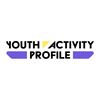Development of the Youth Activity Profile (YAP)
The Youth Activity Profile (YAP) has been developed (and refined) by researchers affiliated with the Physical Activity and Health Promotion (PAHP) lab at Iowa State University.
It was designed to facilitate the assessment of physical activity in school-based settings and items were specifically crafted to enable calibration with activity monitors. The YAP includes a total of 15 items divided into three sections: 1) Activity At School, 2) Activity Out-of-School, and 3) Sedentary Habits. Items in the At-School section capture participation in physical activity during 5 specific windows of the day (transportation to and from school, as well as activity during physical education, lunch, and recess). Items in the Out-of-School section include activity before school, activity right after-school, activity during the evening, and activity in each weekend day (Saturday and Sunday). Sedentary items, ask about time spent watching TV, playing video games, using the computer, using a cell phone, and also include an overall sedentary time item. The final version of the YAP was subject to pilot testing and cognitive interviews were performed with similarly aged participants in order to refine the final items.
The calibration of the YAP is the defining feature since it enables users to obtain accurate group level estimates of time spent in PA and in sedentary behavior. The current algorithms employed in the software are described in a the paper shown below that was the culminating outcome from a 2 year NIH-funded study that was designed specifically to calibrate this online tool. The associated tabs provide detail on the calibration process and the references for the YAP research. The YAP software was also expanded to include psychosocial correlates that have also been refined and validated for related research on psychosocial factors influencing youth physical activity behaviors. Click the related tabs for more details on the scientific basis for the YAP and CPAC survey.
It was designed to facilitate the assessment of physical activity in school-based settings and items were specifically crafted to enable calibration with activity monitors. The YAP includes a total of 15 items divided into three sections: 1) Activity At School, 2) Activity Out-of-School, and 3) Sedentary Habits. Items in the At-School section capture participation in physical activity during 5 specific windows of the day (transportation to and from school, as well as activity during physical education, lunch, and recess). Items in the Out-of-School section include activity before school, activity right after-school, activity during the evening, and activity in each weekend day (Saturday and Sunday). Sedentary items, ask about time spent watching TV, playing video games, using the computer, using a cell phone, and also include an overall sedentary time item. The final version of the YAP was subject to pilot testing and cognitive interviews were performed with similarly aged participants in order to refine the final items.
The calibration of the YAP is the defining feature since it enables users to obtain accurate group level estimates of time spent in PA and in sedentary behavior. The current algorithms employed in the software are described in a the paper shown below that was the culminating outcome from a 2 year NIH-funded study that was designed specifically to calibrate this online tool. The associated tabs provide detail on the calibration process and the references for the YAP research. The YAP software was also expanded to include psychosocial correlates that have also been refined and validated for related research on psychosocial factors influencing youth physical activity behaviors. Click the related tabs for more details on the scientific basis for the YAP and CPAC survey.
Access the Latest Calibration Research
The YAP team endorses the view that validation is an ongoing process and that individual studies only provide 'evidence' to potentially support the validity of the tool. Our most recent calibration algorithms provide support for the use of the YAP for school-based applications and associated research initiatives. Download the paper if you would like to learn more about the methods we use and the degree of precision that we observed in our cross - validation work.
|


